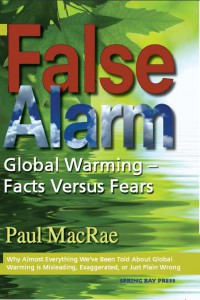Published by on 02 Oct 2010
Polar bears: Maybe the prospects aren’t so gloomy
The Oasis nature channel is presenting a series of programs entitled Extinctions, about creatures threatened with extinction due to geological changes, including global warming. The first of the series was about polar bears, which have been called the canaries in the global-warming coal mine, even though polar bear numbers are actually the highest on record.
Surprisingly, since most programs like this offer misanthropic global warming propaganda (humans are evil carbon-spewers who are going to destroy the planet), the polar bear program was remarkably even-handed.
For a start, not once did the program suggest that humans were causing global warming, although we definitely are responsible for some of the other evils afflicting Arctic populations, including toxic pollution and habitat loss, and we may be contributing, slightly, to warming that would otherwise be occurring anyway. That is, this documentary stayed away from sermonizing and tried to stick to the facts.
To that end, the program went out of its way (at least compared to most recent nature documentaries) to get some sort of balance. And so, along with scientists who believe the bears are severely threatened, the producers also interviewed Mitch Taylor, a Canadian expert on polar bears who doesn’t believe the bears are endangered (he says only two of the 19 polar bear populations are in decline; the program itself said half are in decline) and doesn’t believe global warming is primarily human-caused or potentially catastrophic.
The program also mentioned another fact that is almost always ignored by global warming catastrophists: during the last interglacial 125,000 years ago, called the Eemian, the Arctic also melted pretty much completely, as may be happening now. No humans were involved in that previous global warming; modern humans hadn’t even evolved yet. This interglacial fact is usually ignored because it pretty much destroys the hypothesis that warming and sea-level rise are primarily human caused, rather than natural in an interglacial period. Continue Reading »


